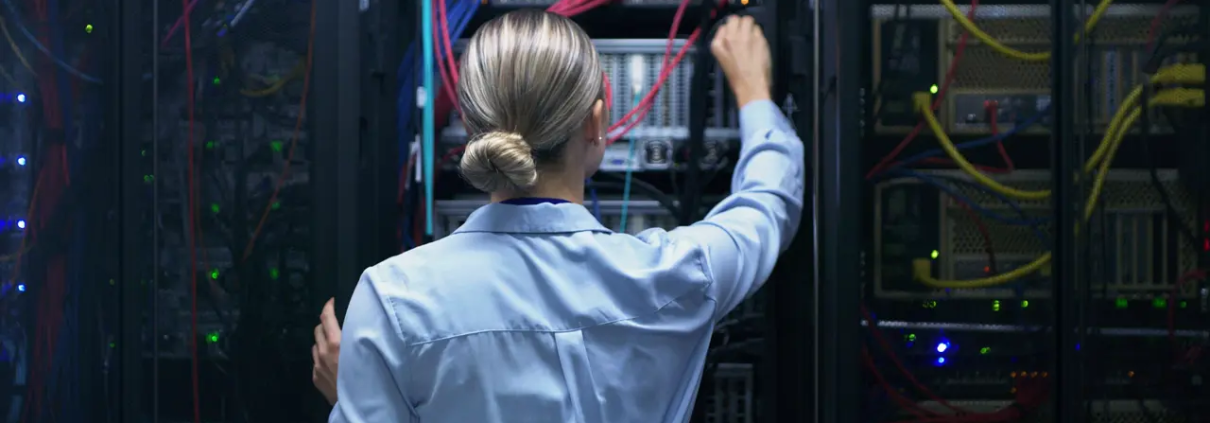Data Center Backup Power: Building Multi-Layer Resilience with UPS, BESS, and Renewable Integration
Introduction: Why Backup Power Defines Uptime in Modern Data Centers
In today’s digital economy, data center uptime isn’t just a performance metric—it’s a business survival factor. Every minute of downtime can cost enterprises more than $8,000, according to Uptime Institute’s global survey. As digital infrastructures scale to support AI, 5G, and edge computing, power reliability has become the cornerstone of operational continuity.
Yet, as power density increases and sustainability standards tighten, the question arises:
Are traditional UPS and diesel backup systems enough to protect mission-critical operations?
The short answer—not anymore.
The next generation of data center backup power goes beyond static UPS systems. It integrates battery energy storage, smart redundancy, and renewable inputs to create a multi-layered resilience architecture that ensures both reliability and efficiency.
- The Multi-Layer Architecture of Data Center Backup Power
A modern data center doesn’t rely on a single backup source—it’s designed as a tiered power ecosystem. Each layer serves a specific role in bridging gaps, managing transitions, and sustaining uptime.
Typical backup power architecture:
- Utility Power (Primary Source) – Main grid input with dual feeds where available.
- UPS (Uninterruptible Power Supply) – Provides instantaneous switchover, bridging the milliseconds between grid loss and generator start-up.
- Generators (Diesel or Gas) – Long-duration power during extended outages.
- BESS (Battery Energy Storage System) – Supplements both UPS and generator operations, offering load balancing, peak shaving, and renewable integration.
While UPS systems handle short-term continuity, integrating BESS enables dynamic response capabilities—transforming backup power from a reactive system into a predictive, energy-optimizing component.
- Tier Classification and Power Redundancy (N, N+1, 2N, 2(N+1))
Data centers are classified by the Uptime Institute’s Tier standards, which directly influence how backup power is designed:
| Tier Level | Redundancy Model | Expected Availability |
| Tier I | N (No Redundancy) | 99.671% |
| Tier II | N+1 | 99.741% |
| Tier III | 2N or N+1 | 99.982% |
| Tier IV | 2(N+1) | 99.995% |
Each step up the Tier ladder adds redundancy, complexity, and—most importantly—power resilience.
For Tier III and Tier IV facilities, dual UPS systems running in parallel (2N configuration) ensure that even a full UPS failure won’t disrupt critical loads.
If you’d like a broader perspective on power system design within these Tier models, see our in-depth guide: Designing Reliable Power Systems for Data Centers.
- Lithium-Ion and BESS Integration: The Next Phase of Backup Power
Lead-acid batteries have long been the backbone of UPS systems—but the shift to lithium-ion and BESS integration is accelerating for several reasons:
⚙️ Key Advantages:
- Higher Energy Density: Up to 70% smaller footprint, freeing valuable white space.
- Longer Lifecycle: 3–5× the lifespan of VRLA batteries.
- Faster Recharge & Discharge: Ideal for short backup intervals and grid stabilization.
- Intelligent Monitoring: Built-in BMS enables predictive maintenance and real-time health analytics.
- Lower TCO: Reduced cooling and replacement costs over time.
By coupling UPS systems with short-time lithium backup modules, operators achieve higher efficiency and improved load flexibility. These systems not only support critical loads but also enable grid-interactive functions—such as peak shaving and energy arbitration—under advanced energy management systems.
Explore advanced lithium solutions engineered for data center backup applications here.
- Designing for Sustainability and Energy Efficiency
The next evolution in data center backup power involves renewable energy integration. Instead of being passive consumers, data centers are becoming active participants in smart grids.
- Solar + BESS + UPS Hybridization: Solar PV systems can supply daytime load, while BESS ensures overnight reliability.
- Microgrid Deployment: Localized renewable generation improves autonomy and reduces grid dependency.
- Lower PUE (Power Usage Effectiveness): Efficient backup systems reduce idle energy waste.
- Carbon Reduction: Lithium-based BESS eliminates generator overuse, cutting emissions dramatically.
For hyperscale operators, sustainability targets now go hand-in-hand with resilience metrics. A well-optimized backup power strategy can contribute to carbon neutrality while ensuring 99.999% uptime.
- Operational Strategies: Testing, Monitoring, and Lifecycle Management
Building resilience doesn’t end with installation—it’s sustained through data-driven management.
Modern backup systems incorporate predictive maintenance and AI-powered monitoring to preempt failures before they occur.
Best Practices Include:
- Regular Load Testing: Simulating full-scale outage scenarios to validate system readiness.
- Thermal Imaging: Identifying hotspots in UPS and battery arrays.
- Battery Health Analytics: Tracking degradation curves via BMS data.
- Redundant Path Verification: Ensuring automatic transfer switches (ATS) and bypass routes perform flawlessly.
Compared to traditional manual checks, smart monitoring enables proactive optimization, extending both system lifespan and energy efficiency.
- From Backup to Energy Ecosystem: The Future of Data Center Power
As data centers evolve into energy-aware digital infrastructures, the line between backup and primary power continues to blur.
UPS, generators, and BESS now operate as a coordinated ecosystem—balancing reliability, cost, and environmental responsibility.
Tomorrow’s data centers won’t just survive outages; they’ll anticipate them, stabilize the grid, and return energy back to the system when needed.
That’s the vision behind the next generation of data center backup power—a system built not merely for uptime, but for intelligent, sustainable resilience.
For insights into global market transitions shaping this field, explore our analysis on Data Center Power Market Trends.
Final Takeaway
Building resilient backup power for data centers is no longer just a matter of installing larger UPS units or more generators. It’s about creating synergy—between UPS, BESS, and renewables—to support continuous, efficient, and intelligent operations.
For operators planning their next infrastructure upgrade, the goal should be clear:
transition from backup reliability to energy intelligence.
And for facilities seeking scalable, lithium-based UPS support systems designed for short-time backup performance, Leoch Lithium offers purpose-built solutions tailored for high-demand data environments.
👉 Explore more here.


